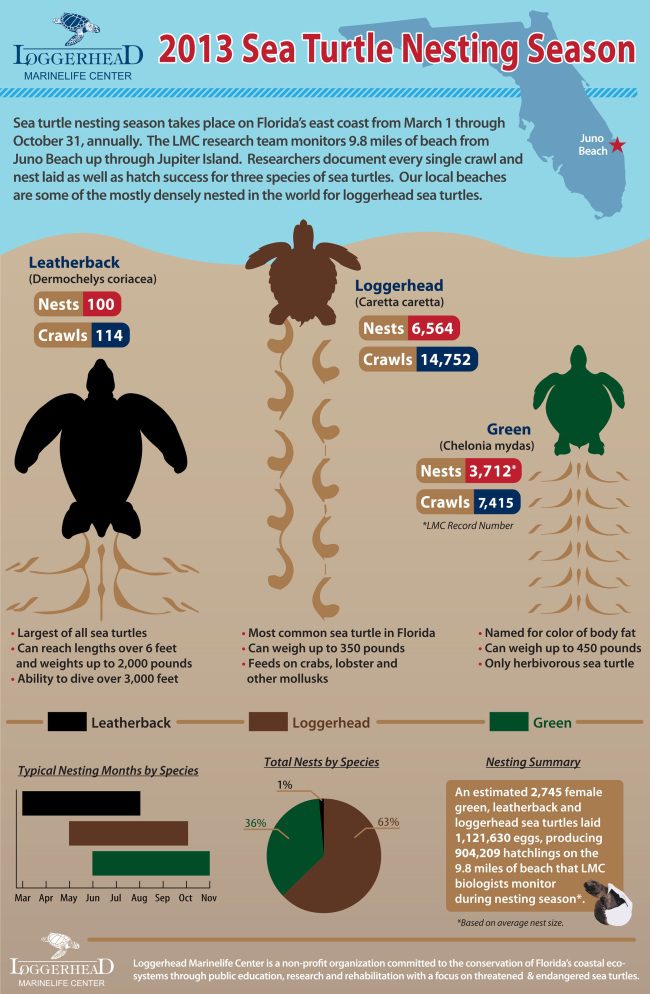A record number of green sea turtle nests have been reported in Florida, according to Florida wildlife officials, with Loggerhead Marinelife Center (LMC) being no exception. The center, adjacent to one of the most densely nested loggerhead sea turtle beaches in the world, recorded record breaking green sea turtle nesting numbers for the 2013 season. With 3,712 nests in Juno Beach, Jupiter, Tequesta and Jupiter Island, green sea turtle nest totals have increased more than double from last year’s total of 1,361 nests. Florida Fish and Wildlife Conservation Commission biologists said that over 25,000 green sea turtle nests were counted on 26 state beaches this year, more than twice the previous record.
“We would like to believe that conservation efforts over the last 30 years are a factor in the high number of green sea turtle nests documented in 2013, but the truth is, we do not know for certain,” said Dr. Charles Manire, LMC Director of Research & Rehabilitation. Because sea turtles have such a long life span and late reproductive age, it is necessary to have data that spans multiple generations, which means a minimum of 60 years of data are necessary to be able to draw conclusions with any certainty, according to Dr. Manire. “With only 30 years of data at this point, it makes it that much more important that this conservation work continue,” he added.
LMC research biologists have been hard at work marking, tracking and taking inventory of the threatened and endangered sea turtles’ nests while observing hatching success. On the 9.8 miles of carefully monitored shoreline in Juno Beach, Jupiter, Tequesta and Jupiter Island, Loggerhead Marinelife Center has accounted for 31 percent of the total leatherback nests in the state of Florida. Palm Beach County is home to the densest and busiest leatherback nesting beaches in the United States. LMC recorded 100 nests out of 322 statewide nests, resulting with 193 fewer nests than 2012’s total. Loggerhead sea turtle nest numbers are also down this year state-wide, with 44,810 nests counted compared with 58,172 in 2012. Loggerhead Marinelife Center contributed 6,564 loggerhead nests to this year’s statewide total. An estimated total of 2,745 female sea turtles nested on Loggerhead Marinelife Center’s monitored beaches this year. LMC biologists reported an estimated 1,121,630 eggs that were laid during the season, resulting in 904,209 hatchlings that reached the ocean.
This season was a strong year for sea turtle crawls, with a total number of 22,281 crawls on Juno Beach, Jupiter, Tequesta and Jupiter Island. LMC biologists reported 11,806 false crawls this year, representing sea turtles that came ashore but for some reason were startled or unhappy with the area and returned to the sea without making nests or laying their eggs.
While sea turtles are beautiful captivating creatures, it is illegal to harm or harass sea turtles, their nests or hatchlings. Sea turtles are protected by the US Endangered Species Act of 1972 and Florida Statute Chapter 370.

